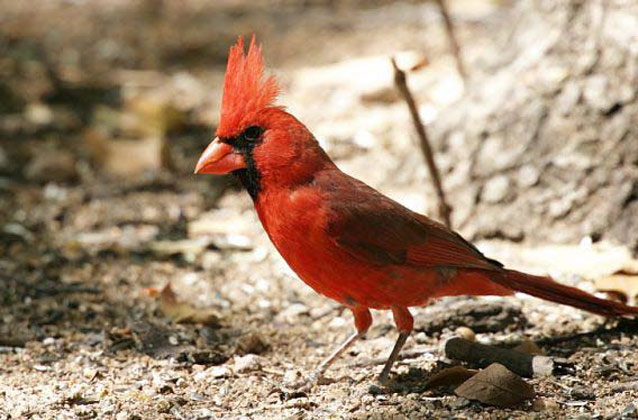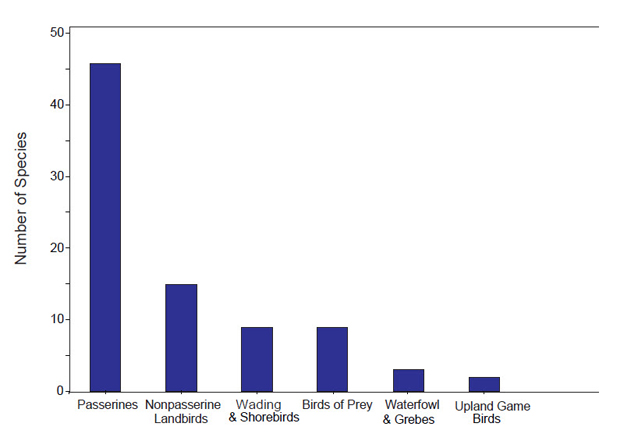Methods

© Robert Shantz
The Oklahoma Natural Heritage Inventory conducted a bird inventory in May-July 2003 at Chickasaw National Recreation Area (NRA) in Oklahoma. No prior avian inventories exist for this park. Chickasaw NRA, nearly 10,000 acres in size, is dominated by forest, herbaceous and woodland vegetation types and the Lake of the Arbuckles covers about 16% of this area. Point counts were used to survey for birds. Each point (total of 123 locations) was visited once between dawn and 10 am and all birds seen or heard within an eight-minute period were recorded. Points were at least 200 meters apart.
Status
Of the 152 bird species that may occur in south-central Oklahoma between May and August, 84 species (55%) were detected during the 2003 inventory (See graph below). Many of the 152 species in the Oklahoma date guide breed in habitats that do not exist in the Chickasaw NRA or are migrant waterbirds that make little use of Lake of the Arbuckles.

Species recorded that are tracked by the Oklahoma Natural Heritage Inventory include: black vulture (Coragyps atratus), Canada goose (Branta canadensis), Cooper’s hawk (Accipiter cooperii), Swainson’s hawk (Buteo swainsoni), spotted sandpiper (Actitis macularius), and yellow warbler (Setophaga petechia). Of these species, only black vultures were relocated frequently. Species recorded in the largest numbers include Northern cardinal (Cardinalis cardinalis), painted bunting (Passerina ciris), tufted titmouse (Baeolophus bicolor), Carolina chickadee (Poecile carolinensis), American crow (Corvus brachyrhynchos), and blue-gray gnatcatcher (Polioptila caerulea).
Most birds were first detected on point counts (n=67 species) with fewer being encountered incidentally (n=19), during visual encounter surveys (n=3) or during mist netting (n=1). Additional species would likely be observed by using a multi-season sampling scheme to include non-breeding birds. Prothonotary warbler (Protonotaria citrea), Louisiana waterthrush (Parkesia motacilla) and Northern parula (Setophaga americana) may be indicative of healthy wetlands or streams in central Oklahoma and could be used as management indicator species in these habitats in Chickasaw NRA. Similarly painted bunting, dickcissel (Spiza americana), Northern bobwhite (Colinus virginianus) and grasshopper sparrow (Ammodramus savannarum) could be indicator species for Oklahoma uplands that were historically characterized by grassland, savanna, and grassland-woodland ecotones.
Contacts
Jeff Kelly, Joel Strong, Jesse Bahm, and Adrienne Lee Cooper, Oklahoma Natural Heritage Inventory, University of Oklahoma.
Reference
Kelly J and Others. 2004. Mammal, Bird and Herpetological Inventory of Chickasaw National Recreation Area NPS. Norman, OK.
Prepared the Southern Plains Network Inventory and Monitoring Program, 2015.
Part of a series of articles titled Southern Plains Bird Inventories.
Last updated: February 1, 2017
